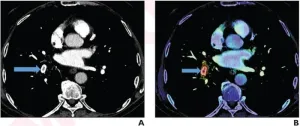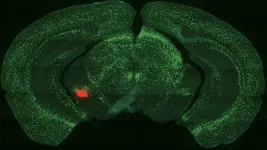(Press-News.org) INDIANAPOLIS--A multi-disciplinary team of Indiana University researchers is focusing their efforts on a growing public health concern: binge and “high-intensity” drinking—extreme drinking behaviors that are increasingly prevalent among college-age adults.
The researchers, who are part of the Indiana Alcohol Research Center, recently received a five-year, $8.65 million grant renewal from the National Institute on Alcohol Abuse and Alcoholism to support this work.
Established in 1987, the Indiana Alcohol Research Center (IARC) is housed at IU School of Medicine and led by director David Kareken, PhD, a professor of neurology at the school. The center’s broad mission is to study the behavioral and neurobiological risks for alcohol use disorder.
“The IARC begins its eighth consecutive funding cycle by continuing its long tradition of multi-disciplinary collaboration across animals and humans to better understand the neurobiological and behavioral risks for developing alcohol use disorder,” Kareken said. “We believe that our combined diverse methods and perspectives are best suited to studying a problem of both great importance and complexity.”
Cristine Czachowski, PhD, a professor of psychology at the School of Science at IUPUI, and Christopher Lapish, PhD, a professor of anatomy, cell biology and physiology at IU School of Medicine, serve as the center’s deputy director and scientific director, respectively.
“The center provides researchers like me—those studying rodent models of behavior—valuable interactions with colleagues (and friends) who work on the clinical side,” Czachowski said. “The crosstalk between disciplines, and across many departments, keeps us at the top of our game with regard to the latest findings and focused on the human experience of alcohol use disorder.”
Working as a team across basic and clinical research, center faculty will work to determine how inherited and acquired behavioral and neurobiological vulnerabilities predispose people to more intense patterns of drinking, with a particular emphasis on factors that lead to faster initial rates of drinking and a proclivity for sustained high intake.
“Our ability to measure how brain function is altered in alcohol use disorder is rapidly improving,” Lapish said. “This is true for humans and rodent models of the disorder. Our hope is that we can find similarities across the species, which, in turn, will facilitate new treatments.”
The researchers will also work with the community, schools, health care providers and state policy makers in providing education about the science, prevention, and treatment of alcohol use disorder.
This funding renewal is the Indiana Alcohol Research Center’s eighth consecutive five-year grant from the National Institute of Alcohol Abuse and Alcoholism since its founding. Over the past three decades, center researchers and their collaborators have played key roles in studying alcohol use disorder heritability—showing differing genetic and environmental influences across the disorder’s developmental timeline.
Their animal and human research models are also used worldwide in alcohol-related research. Center researchers conceived, and continue to refine, the “Computer-assisted Alcohol Infusion System,” an intravenous alcohol administration research method that permits exquisite experimental control over an individual’s level of alcohol exposure—a technique employed in human research laboratories around the world. The center’s animals—rats and mice selectively bred by the IARC to prefer alcohol—are similarly used throughout the world to help understand inherited risk.
Other Indiana Alcohol Research Center project and core resource leaders include IU School of Medicine’s Martin Plawecki, MD, PhD; Frederic (Woody) Hopf, PhD; Tamika Zapolski, PhD; and Karmen Yoder, PhD; and the IUPUI School of Science’s Marian Logrip, PhD; Nicholas Grahame, PhD; Melissa Cyders, PhD; and Stephen Boehm, PhD. Collaborating scientists include researchers at IU School of Medicine, the School of Science at IUPUI, the IU School of Public Health-Bloomington, and Purdue University.
About IU School of Medicine
IU School of Medicine is the largest medical school in the U.S. and is annually ranked among the top medical schools in the nation by U.S. News & World Report. The school offers high-quality medical education, access to leading medical research and rich campus life in nine Indiana cities, including rural and urban locations consistently recognized for livability.
END
IU researchers receive $8.6M NIH grant renewal to study alcohol use, binge drinking
2023-04-05
ELSE PRESS RELEASES FROM THIS DATE:
Looking beyond the horizon
2023-04-05
Texas Tech’s Thomas Maccarone has received a grant from the U.S. Air Force Office of Scientific Research to study possible impacts of one layer of the earth’s ionosphere upon radio communications.
Maccarone, a professor in the Department of Physics and Astronomy, said the project will have short- and long-term benefits and implications. The one-year grant is for just more than $500,000.
“We will use a set of dipole radio antennas to study what is called the sporadic E-layer of the ionosphere,” he said. “That is the short-term component the Air Force ...
AI cuts CT turnaround, wait times for positive pulmonary embolus
2023-04-05
Leesburg, VA, April 5, 2023—According to an accepted manuscript published in ARRS’ own American Journal of Roentgenology (AJR), a worklist reprioritization tool with artificial intelligence reduced both report turnaround time and wait time for pulmonary embolus-positive CT pulmonary angiography examinations.
“By assisting radiologists in providing rapid diagnoses, the artificial intelligence (AI) tool could potentially enable earlier interventions for acute pulmonary embolus (PE),” concluded lead researcher Kiran Batra, MD, from the department of radiology at University of Texas Southwestern Medical ...
Gone for good? California’s beetle-killed, carbon-storing pine forests may not come back
2023-04-05
LOS ALAMOS, N.M., April 4, 2023—Ponderosa pine forests in the Sierra Nevada that were wiped out by western pine beetles during the 2012-2015 megadrought won’t recover to pre-drought densities, reducing an important storehouse for atmospheric carbon.
“Forests store huge amounts of atmospheric carbon, so when western pine beetle infestations kill off millions of trees, that carbon dioxide goes back into the atmosphere,“ said Zachary Robbins, a postdoctoral at Los Alamos National Laboratory.
Robbins is corresponding author of a new paper published in the journal Frontiers in Environmental Science about carbon stored in living ponderosa pines in the ...
Dual quasars blaze bright at the center of merging galaxies
2023-04-05
Galaxies grow and evolve by merging with other galaxies, blending their billions of stars, triggering bursts of vigorous star formation, and often fueling their central supermassive black holes to produce luminous quasars that outshine the entire galaxy. Some of these mergers eventually go on to become massive elliptical galaxies that contain black holes that are many billions of times the mass of our Sun. Although astronomers have observed a veritable menagerie of merging galaxies with more than one quasar in our own cosmic neighborhood, more distant examples, seen when the Universe was only a quarter of its current age, are quite rare and ...
SFU research aids fight against treatment-resistant superbugs
2023-04-05
Researchers at Simon Fraser University are studying the genes of superbugs to aid the development of new and effective treatments for drug-resistant bacterial infections. Superbugs are characterized as infection-causing bacteria resistant to treatment with antibiotics.
“Antimicrobial resistance occurs when the disease-causing bacteria has ways to overcome the antibiotics that we use in treatment for infections,” says assistant professor Amy Lee, of SFU's Department of Molecular Biology and Biochemistry. The initiative is a collaboration between the Lee Lab and Brinkman Lab, which are working together as ...
Underground water could be the solution to green heating and cooling
2023-04-05
About 12% of the total global energy demand comes from heating and cooling homes and businesses. A new study suggests that using underground water to maintain comfortable temperatures could reduce consumption of natural gas and electricity in this sector by 40% in the U.S. The approach, called aquifer thermal energy storage (ATES), could also help prevent blackouts caused by high power demand during extreme weather events.
“We need storage to absorb the fluctuating energy from solar and wind, and most people are interested in batteries ...
WVU researchers earn $8M for rare earth extraction facility, an economic and environmental game changer
2023-04-05
West Virginia University researchers will continue to develop and advance their pioneering method to extract and separate rare earth elements and critical minerals from acid mine drainage and coal waste, courtesy of $8 million in new funding from the U.S. Department of Energy.
The grant, part of President Joe Biden’s Investing in America agenda, will lead to the design, construction and operation of a pre-commercial demonstration facility for separating and refining rare earth elements and critical minerals, according to Paul Ziemkiewicz, project lead and director of the West Virginia Water ...
Danger or pleasure? How we learn to tell the difference
2023-04-05
Deep within our brain’s temporal lobes, two almond-shaped cell masses help keep us alive. This tiny region, called the amygdala, assists with a variety of brain activities. It helps us learn and remember. It triggers our fight-or-flight response. It even promotes the release of a feel-good chemical called dopamine. Scientists have learned all this by studying the amygdala over hundreds of years. But we still haven’t reached a full understanding of how these processes work.
Now, Cold Spring Harbor Laboratory neuroscientist Bo Li has brought us several important steps closer. His lab recently made a series of discoveries ...
Ice sheets can collapse faster than previously thought possible
2023-04-05
Ice sheets can retreat up to 600 metres a day during periods of climate warming, 20 times faster than the highest rate of retreat previously measured.
An international team of researchers, led by Dr Christine Batchelor of Newcastle University, UK, used high-resolution imagery of the seafloor to reveal just how quickly a former ice sheet that extended from Norway retreated at the end of the last Ice Age, about 20,000 years ago.
The team, which also included researchers from the universities of Cambridge and Loughborough in the UK and the Geological Survey of Norway, mapped more than 7,600 small-scale landforms called ‘corrugation ridges’ across the seafloor. The ridges ...
Chinese researchers achieve superionic hydride ion conduction at ambient temperatures
2023-04-05
Materials that can conduct negatively charged hydrogen atoms in ambient conditions would pave the way for advanced clean energy storage and electrochemical conversion technologies. A research team from the Dalian Institute of Chemical Physics (DICP) of the Chinese Academy of Sciences (CAS) demonstrated a technique that enables a room-temperature all-solid-state hydride cell by introducing and exploiting defects in the lattice structure of rare earth hydrides.
Their study was published in Nature on April 5.
Solid materials ...






